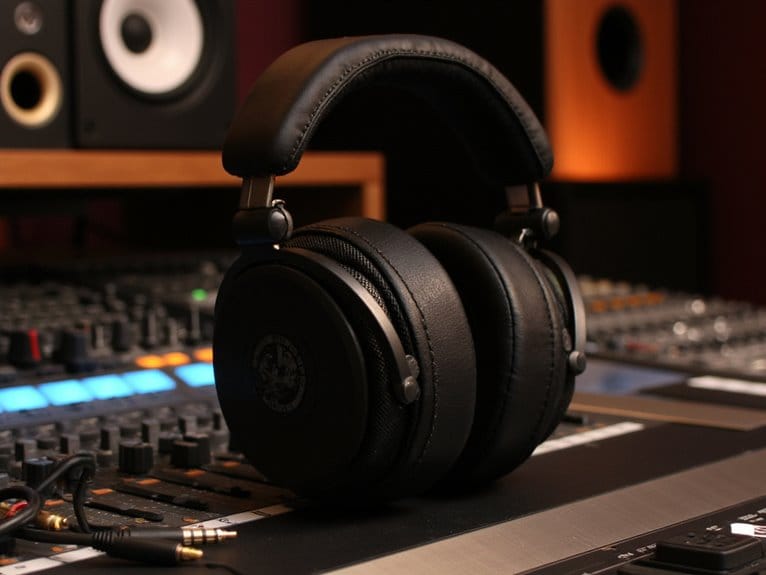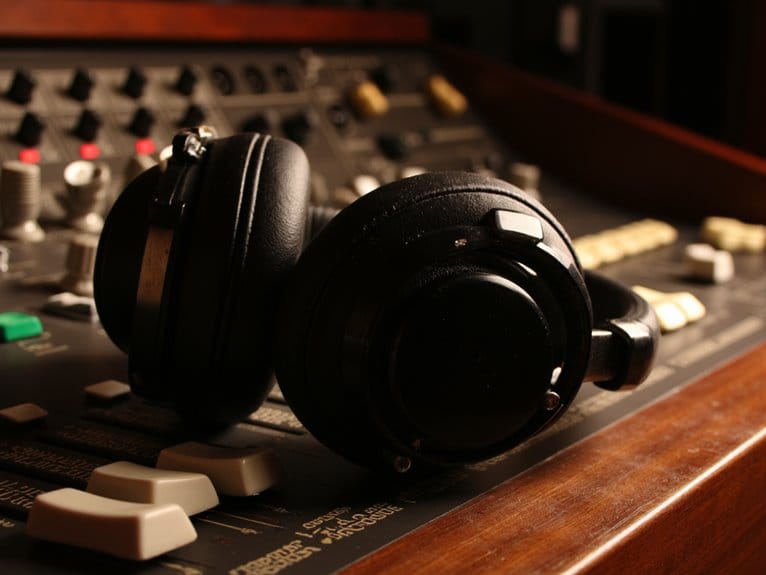What Makes a Drum Beat?
A drum beat is a complex entity comprising multiple elements. The selection of drums with unique sonic characteristics lays the foundation, influencing the drummer's technical approach and crafting a distinct sonic identity. Time signatures provide the structural framework, while rhythmic patterns and grooves inject complexity and depth. Accentuation techniques and strategic backbeat placement add nuance and forward motion. Fills and flourishes punctuate shifts in emotional intensity, and the right tempo evokes a lasting impression. As these elements converge, a rich and engaging rhythmic experience emerges, and a deeper exploration of these components reveals the intricate artistry behind a compelling drum beat.
We are supported by our audience. When you purchase through links on our site, we may earn an affiliate commission, at no extra cost for you. Learn more.
The Role of Drum Choice
The selection of drums is a vital factor in shaping the overall sound and character of a drum beat, as different drums possess unique tonal properties and dynamic responses. This tonal variation is primarily determined by the shell selection, which can range from tight, focused sounds to deep, resonant tones. For instance, a birch wood shell may produce a bright, attacking sound, while a mahogany shell may yield a warmer, more rounded tone. By carefully selecting the right drums, drummers can craft a distinct sonic identity that complements their playing style and musical genre. Furthermore, the choice of drums can also influence the drummer's technical approach, as certain drums may require adjustments in stroke velocity or stick selection to achieve optimal sound quality.
Understanding Time Signatures
In drumming, a fundamental element of rhythmic expression lies in mastering time signatures, which serve as the underlying framework for structuring rhythmic patterns and phrases. Understanding signature basics is essential, as it defines the rhythmic pulse and meter of a piece. A time signature consists of two numbers, one on top of the other, indicating the number of beats per measure and the type of note that receives one beat. Metric variations, such as changing time signatures or using complex meters, add depth and complexity to a rhythmic composition. Drummers must internalize these concepts to execute intricate rhythmic passages with precision and confidence. By grasping time signatures, drummers can access a wide range of rhythmic possibilities, ultimately releasing their overall musical expression.
Rhythmic Patterns and Grooves
Polyrhythmic grooves, born from the intersection of multiple rhythmic patterns, inject a rich layer of complexity into drumming, allowing artists to craft unique sonic landscapes. These intricate patterns weave together to form polyrhythmic textures, adding depth and nuance to the overall sound. Micro groove variations, subtle alterations in rhythmic phrasing, further augment the drummer's expressive palette. By manipulating these patterns and grooves, drummers can create a wide range of dynamic, engaging, and emotionally resonant music. From the driving simplicity of a straight-ahead rock beat to the labyrinthine intricacies of progressive metal, rhythmic patterns and grooves form the foundation of a drummer's art, providing the essential framework for musical expression.
The Power of Accentuation
Five distinct accentuation techniques – dynamic, agogic, tonic, metric, and phrasing – empower drummers to inject expressive nuance into their rhythmic patterns and grooves. These accent types allow for varied emphasis on specific beats or notes, adding depth and complexity to the music. Strategic accent placement can transform a simple rhythmic pattern into a compelling groove. By manipulating the placement and type of accents, drummers can create a sense of tension and release, guide the listener's attention, and convey emotion. Effective use of accentuation techniques requires a deep understanding of rhythmic structure and musical context, enabling drummers to craft a unique sonic identity and escalate their playing to new heights.
Creating a Strong Backbeat
A strong backbeat, often rooted in the second and fourth beats of a 4/4 time signature, serves as the rhythmic anchor that propels a song forward, providing a sense of stability and forward motion. To create a strong backbeat, drummers must master the subtleties of backbeat nuances, such as dynamic control, tone, and placement. A well-executed backbeat establishes groove authority, giving the music a sense of direction and momentum. By emphasizing the "2" and "4" counts, drummers can create a powerful, driving rhythm that underpins the entire song. By focusing on the backbeat, drummers can build a solid foundation for the rest of the rhythm section, allowing the music to breathe and come alive.
Adding Fills and Flourishes
Sophistication is added to the rhythmic landscape when drummers judiciously incorporate fills and flourishes, strategically placed to punctuate shifts, heighten emotional intensity, and inject a sense of spontaneity into the music. Fill techniques such as single-stroke rolls, paradiddles, and flams provide a dynamic contrast to the steady pulse of the backbeat, creating a sense of tension and release. By carefully balancing these ornamental elements with the underlying rhythm, drummers can craft a rich, engaging soundscape that enhances the music. Effective use of fills and flourishes requires a deep understanding of rhythmic structure, phrasing, and dynamic contrast, as well as a keen sense of musicality and restraint.
Finding the Right Tempo
Establishing a tempo that complements the music's emotional intensity and rhythmic complexity is crucial, as it sets the foundation for a cohesive and engaging performance. The right tempo can evoke emotional connections with the listener, creating a sense of tension or release. Cultural influences also play a significant role in determining the tempo, as different genres and styles often have characteristic tempo ranges. For example, Afrobeat typically features fast-paced rhythms, while ambient electronic music often features slower, more atmospheric tempos. By considering these factors, drummers can find a tempo that not only complements the music but also resonates with the audience, creating a lasting impression.





